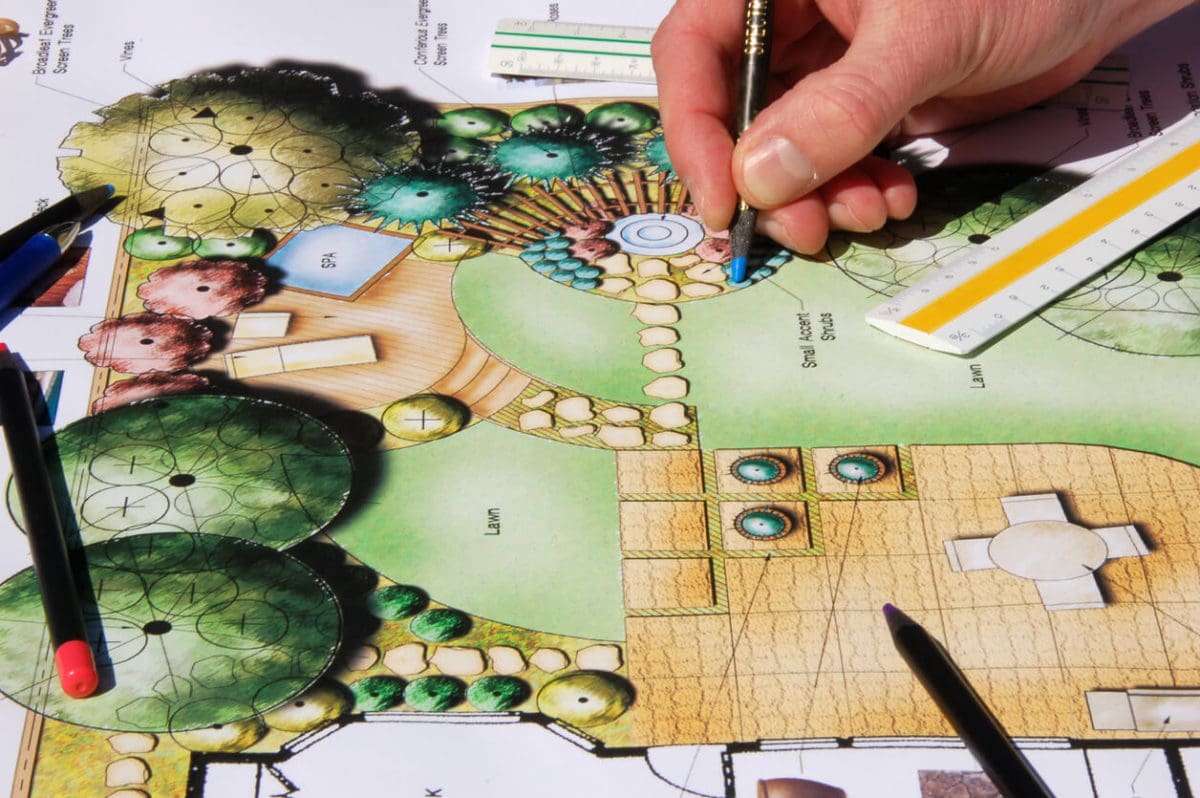Architect Salary Breakdown by Region and Seniority
Architect Salary Breakdown by Region and Seniority
Blog Article
Comprehending the Diverse Career Paths Available for Aspiring Architect
As a hopeful Architect, you have a world of career paths waiting on you. Each path supplies distinct obstacles and opportunities to apply your creative thinking and technical know-how. Whether you're attracted to standard design or the nuances of lasting design, there's a specific niche that lines up with your passions. Understanding these varied alternatives can form your expert trip, but which instructions will you pick to discover first?
Standard Architecture: Designing Structures and structures
Typical style concentrates on developing buildings and structures that mix capability with visual appeal. As you discover this area, you'll value the detailed equilibrium in between kind and purpose. You'll find out to draw ideas from historic designs, incorporating components like proportion, materials, and craftsmanship. Your designs can reflect cultural heritage, showcasing neighborhood customs while satisfying modern-day requirements.
You'll develop abilities in drafting, model-making, and website evaluation, enabling you to imagine and connect your ideas effectively. Involving with clients, you'll require to understand their vision and convert it into viable layouts.
Additionally, developing codes and sustainability practices are crucial in your work, ensuring your frameworks are environmentally friendly and risk-free. As you expand in your job, you'll discover opportunities in domestic, industrial, and even restoration projects, each offering special difficulties. Welcoming conventional design leads the way for a fulfilling job that admires the past while shaping the future.
Urban Preparation: Shaping Neighborhoods and Public Spaces
As an aspiring Architect, you can play a vital function as an urban coordinator, changing exactly how areas engage and operate. By employing community interaction strategies, you'll ensure that residents have a voice fit their environment. Plus, integrating sustainable style principles will aid create areas that not only meet today's needs but also secure the future.
Role of Urban Planners
While lots of could think of engineers as the single dreamers behind structures, city planners play a crucial role in shaping the wider landscape of neighborhoods and public areas. By working together with various stakeholders, you'll help create parks, transportation systems, and household locations that promote social communication and access. Your experience in spatial layout and neighborhood characteristics allows you to imagine future growth while maintaining social heritage.
Neighborhood Engagement Techniques
Efficient area engagement approaches are vital for urban planners to assure that the voices of residents are heard and valued in the planning process. To promote purposeful discussion, you should focus on open forums and workshops where community participants can share their ideas and concerns. By actively paying attention and incorporating responses, you'll create spaces that reflect the community's demands, eventually leading to even more sustainable and successful city settings.
Sustainable Layout Principles
When developing metropolitan rooms, including sustainable layout concepts is vital for creating atmospheres that grow both environmentally and socially. You need to begin by concentrating on power performance, making use of products that lower waste and advertise recycling. Take into consideration incorporating eco-friendly rooms, like yards and parks, to enhance biodiversity and boost air top quality. Promoting walkability and public transport can decrease dependence on autos, cultivating a healthier community.
Creating with water conservation in mind is additionally key-- think of rain gardens and permeable surface areas to take care of stormwater. Involving area participants throughout the preparation procedure assurances that the rooms you create fulfill their requirements and motivate social communication. By welcoming these concepts, you'll add to vivid, lasting metropolitan landscapes that profit everybody.

Landscape Design: Developing Lasting Outdoor Settings
As you explore landscape design, you'll uncover necessary design concepts that develop practical and beautiful outside spaces. Lasting techniques play a vital function in making sure these environments prosper while minimizing ecological influence. Plus, you'll discover a selection of occupation opportunities that enable you to make a real difference in just how people connect with nature.
Style Principles in Landscape
Understanding style concepts in landscape design is necessary for creating sustainable outdoor environments that harmonize with nature. You'll require to consider elements like range, percentage, and equilibrium to ensure your layouts really feel natural and welcoming. Incorporating native plants not only boosts biodiversity but additionally minimizes water usage, making your landscape durable. Assume about the flow of area and how individuals interact with it; paths and seating locations ought to invite expedition and leisure. In addition, focus on seasonal modifications, designing with materials that complement the surroundings year-round (Architect). By focusing on sustainability and looks, you can produce outdoor spaces that improve the community and advertise health. Welcoming these concepts will establish a strong structure for your occupation in landscape architecture.
Sustainable Practices Overview
Lasting practices in landscape architecture not just focus on visual appeals but additionally focus on eco-friendly health and source conservation. By integrating native plants, you enhance biodiversity and reduce the requirement for chemical plant foods and chemicals. Applying effective irrigation systems helps conserve water and decreases overflow, protecting neighboring communities. You can develop areas that promote dirt health, such as using organic materials and exercising permaculture principles. In addition, incorporating environment-friendly framework, like rain yards and porous pavements, help in stormwater management and minimizes metropolitan warm. You add to a healthier world and supply areas that foster community connection when you create dig this outside environments with sustainability in mind. Eventually, these practices ensure your designs profit both people and the atmosphere for several years to find.
Occupation Opportunities Exploration
With a strong foundation in lasting techniques, landscape style supplies a selection of profession courses that allow you to make a purposeful effect on the setting. You can work as a landscape designer, creating visually pleasing and practical outside rooms, or news concentrate on eco-friendly restoration, helping to restore broken environments. Urban planners often collaborate with landscape engineers to create green areas in city settings, enhancing city livability. If you're enthusiastic concerning education, take into consideration becoming a landscape style educator, inspiring future generations. Furthermore, you could function with nonprofits focused on ecological sustainability or take part in research to introduce new methods. Each path not only forms stunning settings however also cultivates a much healthier planet for future generations.
Lasting Design: Concentrating On Eco-Friendly Practices
As you discover your occupation in design, welcoming green practices can establish you apart in a competitive area. Sustainable style concentrates on creating structures that minimize environmental effect while boosting passenger health. By including sustainable products, energy-efficient systems, and lasting building methods, you'll add to a greener future.
Start by acquiring knowledge of green accreditations like LEED or BREEAM, which can strengthen your credentials. Take into consideration exactly how natural light, ventilation, and thermal efficiency can maximize layout. Work together with designers and ecological consultants to introduce services that decrease waste and save sources.
Don't fail to remember the significance of community involvement-- appealing neighborhood stakeholders can motivate layouts that harmonize with the environment. As clients significantly focus on sustainability, your proficiency in environment-friendly practices will not only bring in jobs yet likewise accomplish your passion for liable style. Embrace this important element of the occupation, and see your occupation flourish.
Historical Conservation: Securing and Recovering Cultural Heritage
While you begin on your architectural trip, think about the crucial role of historical conservation in maintaining our social heritage. This field concentrates on the protection and restoration of significant structures, sites, and frameworks that tell the tales of our past. By taking part in historic conservation, you'll help safeguard the architectural tradition that forms area identification.
As a historical conservation Architect, you'll examine historic significance and evaluate the problem of structures. You'll function very closely with historians and conservationists to assure genuine repair techniques are utilized. This profession course allows you to blend imagination with research study, allowing you to design solutions that respect original materials and workmanship.
Your job not just adds to sustainability by recycling existing buildings yet likewise fosters a sense of satisfaction within areas. Embracing this path will assist you come to be a guardian of background, protecting the stories and aesthetic appeals that enhance our lives.
Inside Design: Enhancing Indoor Spaces
Historical conservation and interior architecture both share a dedication to enhancing the constructed atmosphere, yet they focus on different aspects. While historical preservation stresses keeping a framework's cultural and historic value, interior architecture nos in on maximizing indoor rooms for performance and aesthetic appeals.
As an aspiring Architect, you'll discover that interior design permits you to mix creativity with technological abilities. You'll develop areas that not just look excellent but likewise promote comfort and effectiveness. This anchor field includes recognizing exactly how light, shade, and products interact within a room, impacting mood and functionality.
You'll work with numerous tasks, from household homes to business workplaces, making certain that each atmosphere meets the demands of its owners. By focusing on customer experience, you can change interiors right into useful and inspiring spaces, making a significant influence on just how people connect with their surroundings. Accept the chance to boost indoor atmospheres and form the method individuals work and live.
Industrial Design: Combining Capability With Visual Appeals
Industrial style plays a necessary duty in creating products that perfectly blend aesthetics with capability, making sure that what you make use of day-to-day is not only aesthetically attractive but also useful. As an ambitious Architect, you could involve yourself in this field, concentrating on designing everything from furniture to customer electronics. Your work involves understanding customer demands, materials, and manufacturing procedures, permitting you to create ingenious solutions that boost day-to-day experiences.
In commercial style, you'll commonly work together with marketing professionals, engineers, and suppliers, guaranteeing that your designs are not just attractive yet additionally viable. You'll discover to stabilize type and function, prioritizing use without compromising design. By developing your abilities in laying out, 3D modeling, and prototyping, you'll be well-equipped to bring your ideas to life. This profession path supplies a dynamic environment where imagination meets practicality, making it a gratifying choice for designers thinking about forming the products of tomorrow.
Regularly Asked Questions
What Educational Accreditations Do I Need to Come To Be a Designer?
To end up being an engineer, you'll require a professional degree in architecture, typically a Bachelor's or Master's. Additionally, you'll need to complete a teaching fellowship and pass the Architect Registration Examination to exercise lawfully.
Are There Accreditation Demands for Different Architectural Occupation Paths?
Yes, there're certification needs for different building courses. Architect. You'll require to pass exams, complete teaching fellowships, and often pursue specialized training, depending upon your picked emphasis, like landscape architecture, metropolitan layout, or historic preservation
What Software Skills Are Essential for Designers Today?

Exactly How Can I Gain Practical Experience While Examining Design?
You can get functional experience by interning at building companies, joining design competitors, volunteering for area jobs, or collaborating with schoolmates on real-world projects. These possibilities enhance your abilities and construct valuable links in the sector.
What Job Opportunities Exist Outside Typical Architecture Firms?
You can discover various task opportunities outside typical design companies, like urban planning, indoor design, landscape design, construction management, realty advancement, or also roles in sustainability consulting. Each offers unique difficulties and rewards.
Whether you're attracted to standard architecture or the subtleties of sustainable design, there's a particular niche that straightens with your rate of interests.When developing metropolitan rooms, incorporating sustainable layout concepts is critical for creating settings that thrive both ecologically and socially.As you check out landscape design, you'll discover vital style principles that develop lovely and functional outside spaces.Comprehending layout concepts in landscape architecture is important for developing sustainable outside atmospheres that harmonize with nature.In commercial style, you'll commonly team up with marketers, manufacturers, and engineers, guaranteeing that your designs are not just stunning but likewise possible.
Report this page